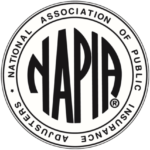A commercial property claim is an inevitable part of doing business. Whether due to natural disasters, burglary, or accidental damage, commercial property owners will likely face a situation where they must file an insurance claim. However, this process can be daunting, especially if you are unfamiliar with the insurance industry’s procedures and terminology. This article aims to demystify the claims process, providing commercial property owners with a clear guide to follow when such an event occurs.
- Incident Reporting
The first step in the claims process is incident reporting. The policyholder should immediately notify their insurance provider whenever an incident that could lead to a claim occurs. This notification should be as detailed as possible, including what happened, when, and the extent of the damage or loss. Prompt reporting is crucial, as delays can sometimes lead to complications or claim denial.
- Documentation
After reporting the incident, the next step is documentation. Documenting a claim involves gathering and preserving evidence about the incident and its aftermath. Photographs or videos of the damage, receipts for property that has been damaged or stolen, and any other relevant information should be collected. If there are witnesses to the incident, their statements can be valuable. Keep copies of all correspondence with your insurer regarding the claim.
- Assessment by the Insurer
The insurance company will assess the claim once the incident has been reported and documented. The assessment often involves a visit from a claims adjuster, a professional who investigates claims on behalf of insurance companies. The adjuster will review the damage and gather additional information if necessary. The adjuster will then use this information to determine the claim’s validity and the amount the insurance company is liable for.
- Settlement Negotiation
After the assessment, the insurer will provide a settlement offer based on the adjuster’s report and the policy terms. This is a crucial stage in the claims process. If the policyholder believes the offer is too low, they have the right to negotiate. A policyholder’s negotiation can involve providing additional evidence of the value of the damaged property or getting an independent assessment. It may be beneficial to consult with a claim professional or attorney during this stage to ensure that you receive a fair settlement.
- Payment and Restoration
If the settlement offer is accepted, the insurer will issue payment. The policyholder can then use these funds to repair or replace the damaged property. If an agreement does not occur, the policyholder may choose appraisal, engaging a public insurance adjuster or attorney, depending on their situation and defined terms in the insurance policy.
Understanding the claims process is crucial for commercial property owners. While it can be complex, navigating it successfully can distinguish between a fair settlement and a financial loss. Staying proactive, organized, and patient is essential, as the claims process can sometimes be lengthy.
Remember, the right insurance partner can make all the difference. Choose a company with a strong reputation for customer service and claims handling, like National Claims Negotiators. National Claims Negotiators can serve as a third-party advocates and work with the insurance company on your behalf. Ultimately, insurance aims to help you recover from loss and continue business operations with as little disruption as possible.


